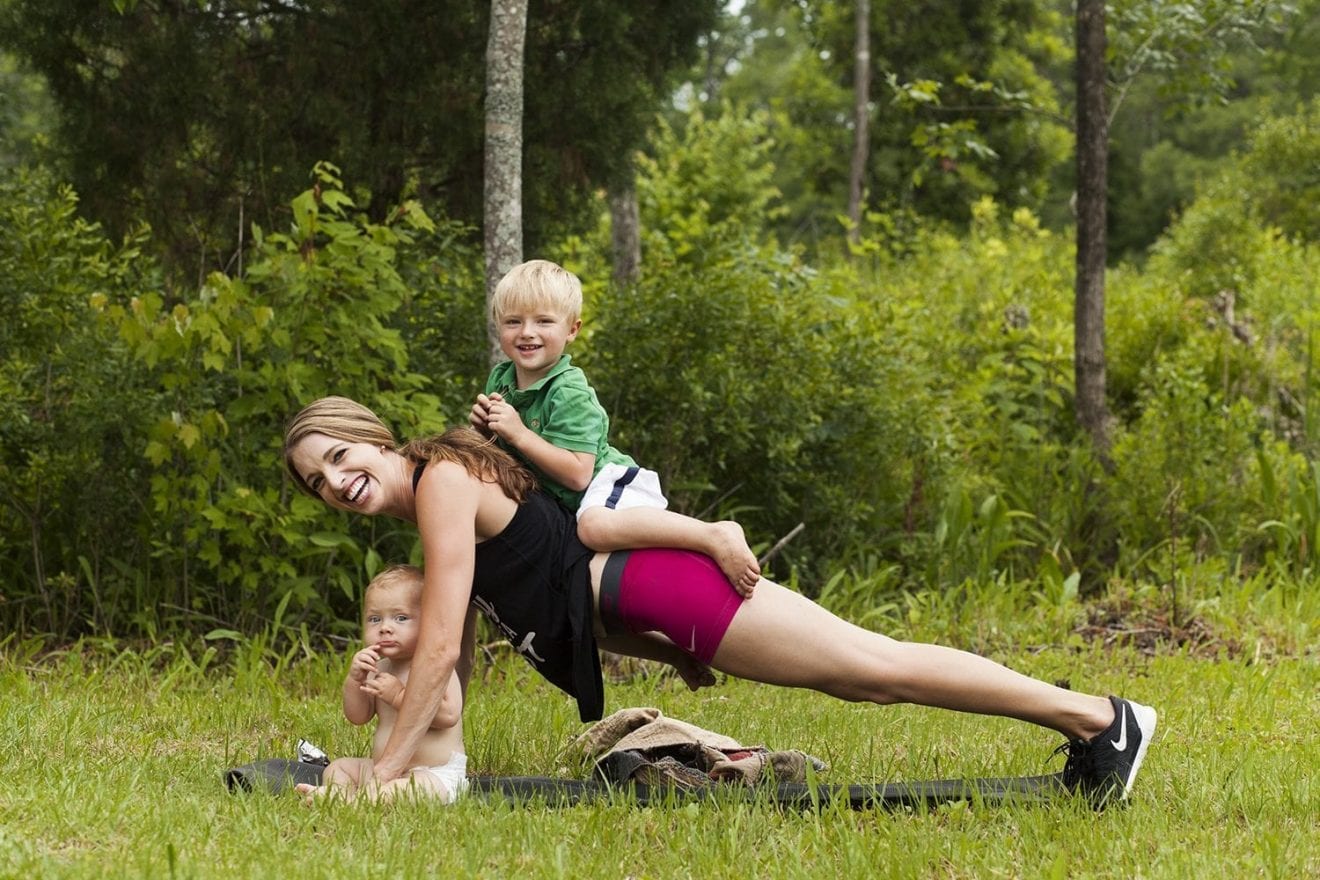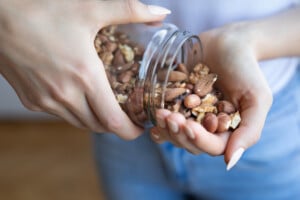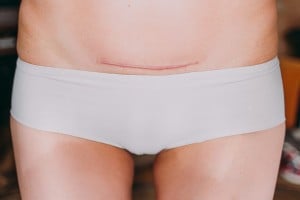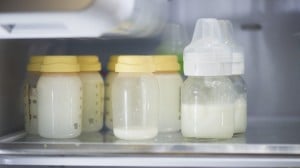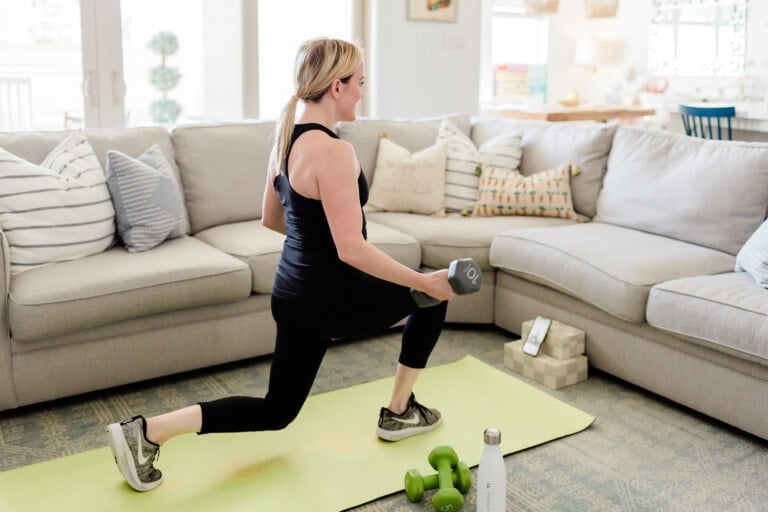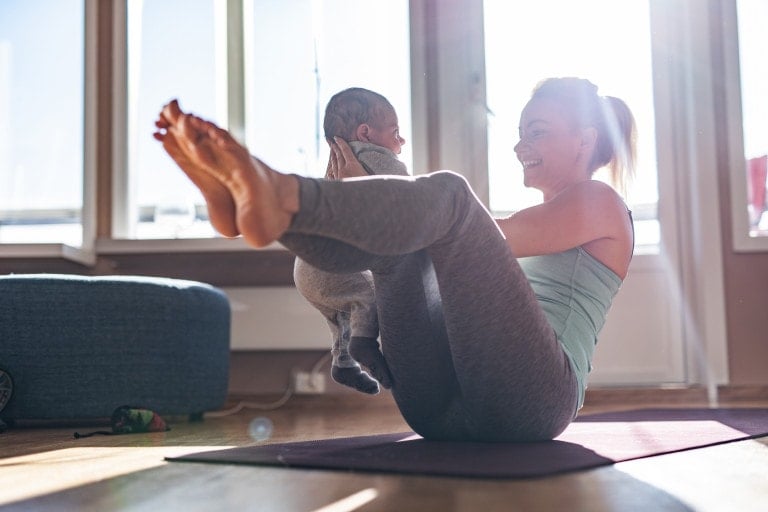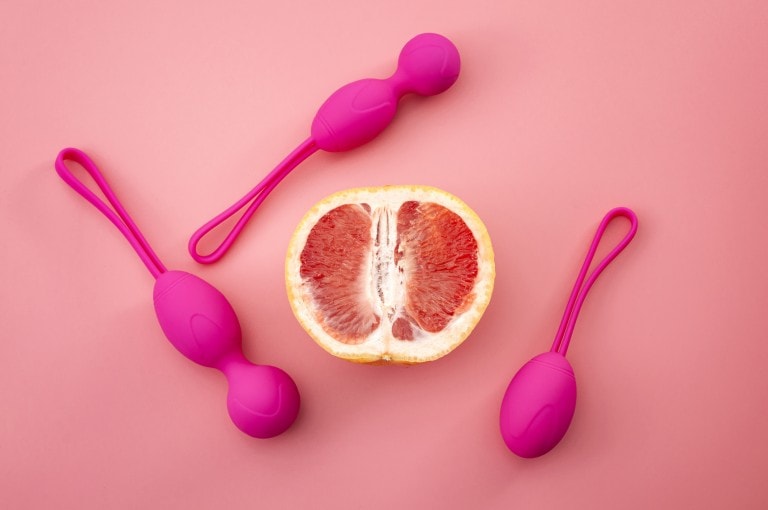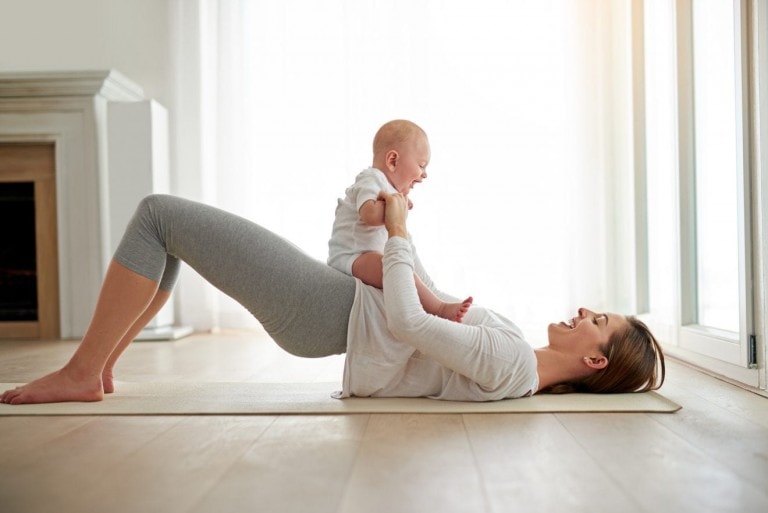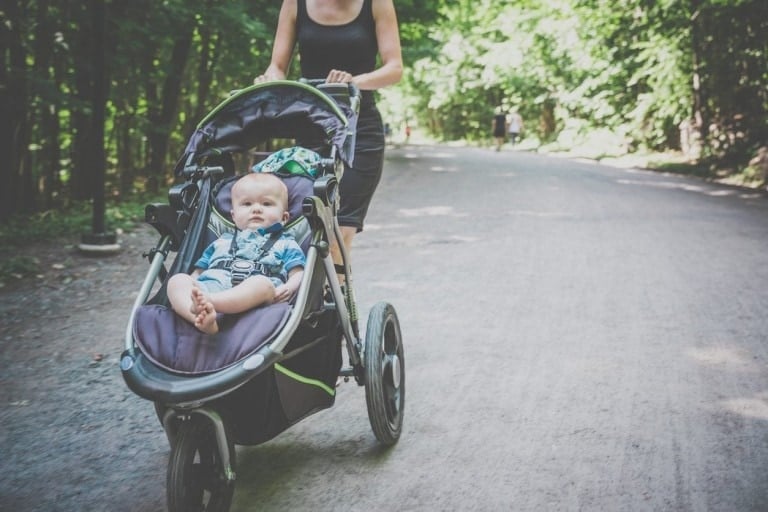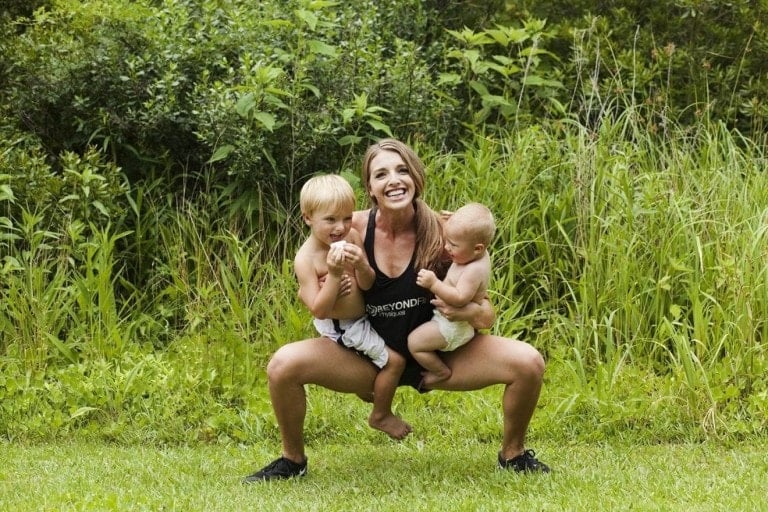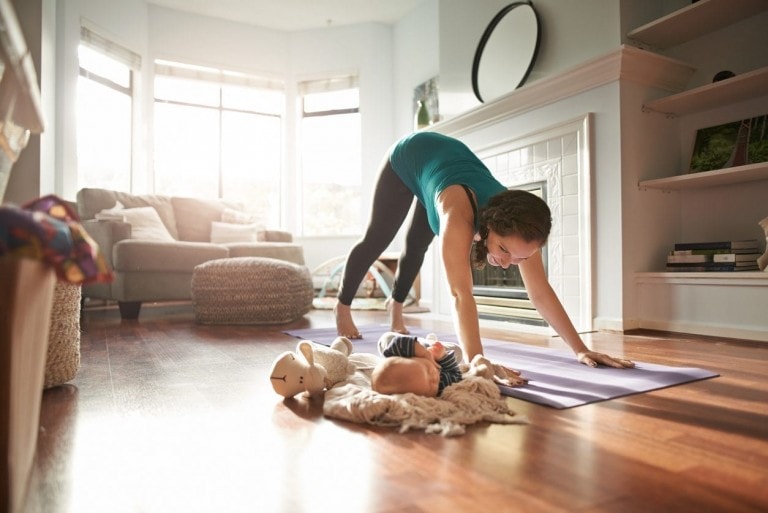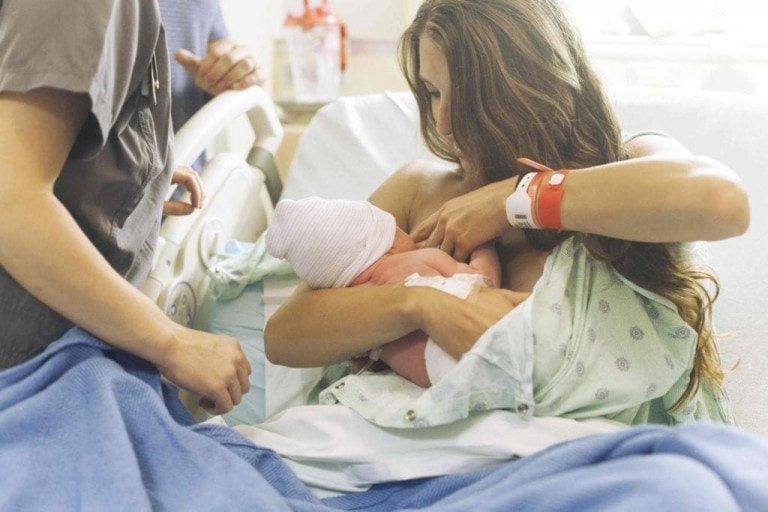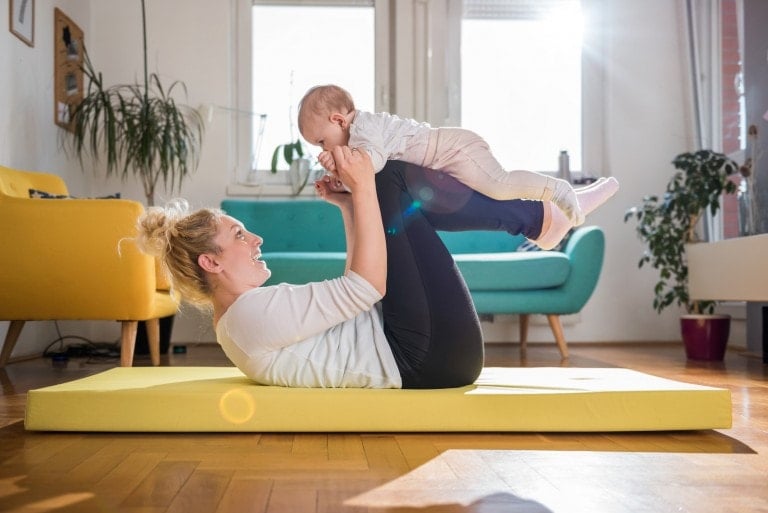One of the most frequently asked questions I get from postpartum moms is how and when to start their postpartum workout. There is a TON of conflicting information about postpartum workouts, so it’s important to understand the basics.
Postpartum Workout Basics: Retrain Your Core
A lot happens to your body when you become pregnant. Things move, stretch, and expand to make room for that precious little bundle of joy. Moms, especially pregnant or newly postpartum moms, need more than a “hardcore” boot camp to “get their bodies back.” Much of the “hardcore” training does MORE harm than good for many moms.
If you want to lose the baby weight, proper postpartum training is a must. But before you can make the most of your “fat loss” or “lose baby weight” training, you must take time to heal and rebuild. Specifically, I’m thinking about regaining strength, correcting pelvic floor issues, and addressing abdominal separation. The most overlooked issue is diastasis recti. Some degree of abdominal separation will always occur during pregnancy. This is because everyone’s core muscles must expand to make room for the baby to grow! In many cases, the separation will not be severe. If you take proper precautions, it will heal naturally post-birth with no medical intervention.
However, in about 60% of pregnancies, the abdominal separation will be wider than 2 – 2.5 finger-widths apart.1 In this case, you will be considered to have diastasis recti during your pregnancy. The good news is that in most cases, diastasis recti in pregnancy will heal naturally post-birth IF you take the proper steps and do the correct exercises to retrain your core!
The bad news is that many trainers aren’t aware of the correct exercises for moms with diastasis recti. When I had my first son, I had NO idea how to figure out if I had diastasis recti. I didn’t know there were everyday exercises and things I should avoid while pregnant and immediately postpartum. Thankfully, I was able to figure out how to test myself (and now I test all of my clients) after my second son was born, and I now know what I should and shouldn’t be doing to get my body back.
Postpartum Workout Basics: Rebuild Muscular Strength
When the time comes to start introducing training, cardio alone won’t cut it. If you’re wondering how to lose baby weight, look past the cardio and onto the weights. The most successful postpartum training plan incorporates a balance of activities. Including leisurely walks, some HIIT, plenty of stretching, proper core training, and weight training.
I realize that carrying a baby around all day is a workout in and of itself. However, adding strength training will be essential to take your fat loss to the next level. Cardiovascular exercise may get you bigger or smaller, but you will stay the same shape—weight training is the #1 way to change the shape of your body.
Strength training three times a week for 30 minutes increases fat-fighting hormones (we’ll talk more about that in a minute) that help burn fat long after your workout is over. This will go a long way toward speeding up your metabolism, tightening, and toning. This is the most often missed secret in postpartum fat loss.
Postpartum Workout Basics: Proper Postpartum Nutrition
Proper postpartum workouts must always be fueled by appropriate postpartum nutrition. Many moms try low-calorie and low-fat diets to lose their baby weight. Diets don’t work. Many times, these types of diets make you fatter. As a new mom, your body needs maximum nutrition to recover from pregnancy, refuel after your workouts, and, if you’re breastfeeding, provide fuel for your baby. So, immediately dropping your caloric intake to an unreasonable level isn’t healthy. This may actually cause you to gain weight. You can also cause long-term damage to your metabolism. You certainly don’t have to count calories (in fact, I prefer to focus on quality over quantity).
To give you an idea of what you need to sustain your baby while breastfeeding and safely lose fat, the National Women’s Health Information Center advises consuming at least 1,800 calories daily.2
For a healthy baby AND momma, concentrate on well-balanced, nutritious food choices that include foods rich in calcium, zinc, magnesium, vitamin B6, and folate. Remember to focus on foods that balance your hunger, energy, and cravings. If you do that, the caloric intake will take care of itself.
Remember to focus on these basics first as you figure out when and how to start your postpartum workout. Don’t get caught up in silly wraps or “magic” pills. It’s tempting to set unrealistic goals and then be frustrated when we aren’t where we “should” be.
Although every new mom is eager to look like her old self again, one of the most important things to remember is to be patient with yourself.













